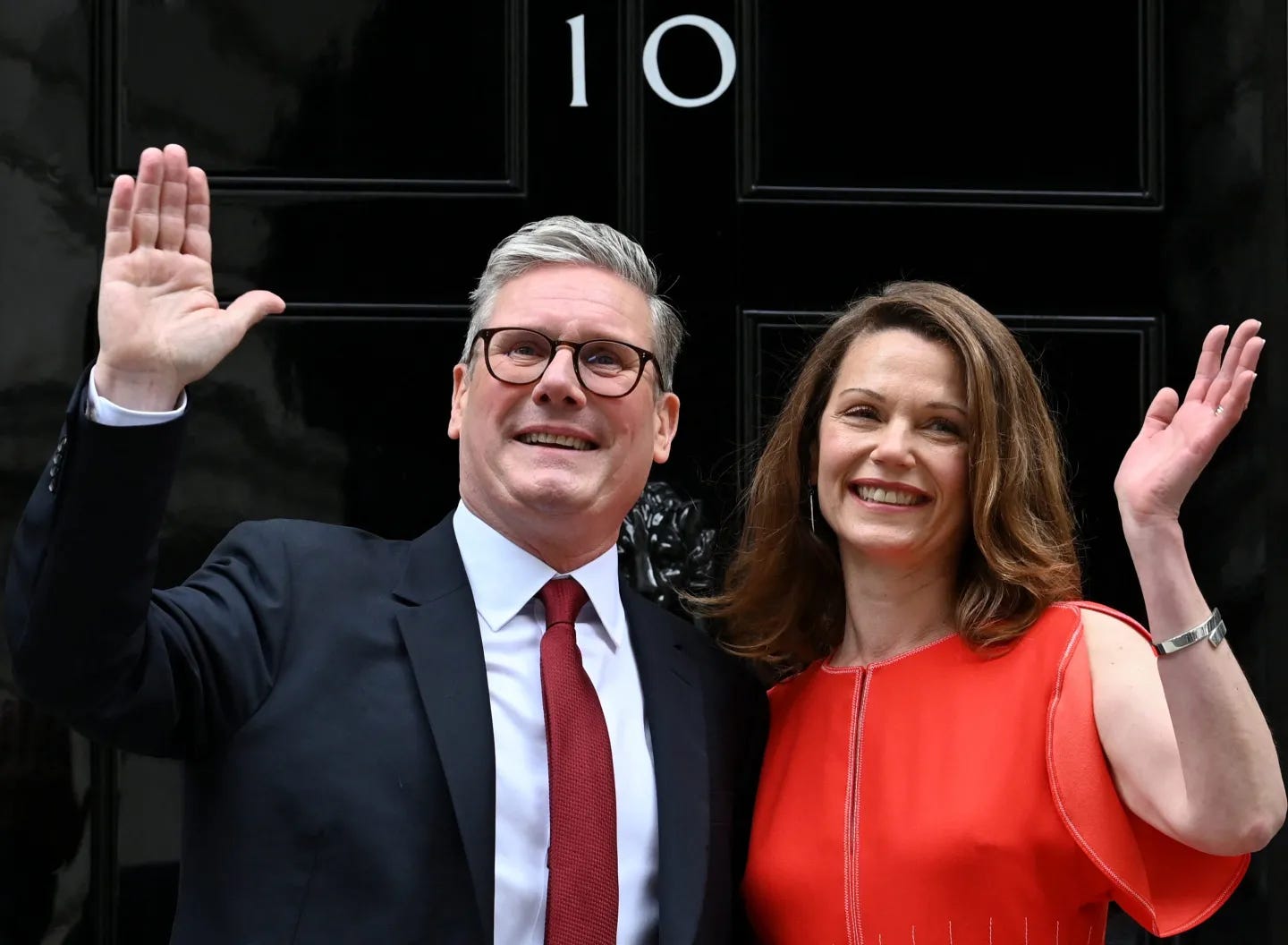OMG the Brits move fast
Canadians should be slack jawed at the speed of government transitions in Britain
It’s July 11. One week ago, on Thursday July 4, there was a general election in the United Kingdom. So pretty soon…wait..Kier Starmer became prime minister the next day? The cabinet was formed over the weekend? THE HOUSE ALREADY MET ON TUESDAY?
I am always stunned by the swiftness of government transitions in Britain. After being up all night, new or returning PMs typically visit Buckingham Palace the day after the election to be invited to form a government. Cabinet announcements trickle out over the next couple of days, and Parliament meets very soon after that.
It’s very different in Canada.
Canadians should be slack jawed at the speed of government transitions in Britain. The closest recent comparison to the 2024 Labour landslide is Justin Trudeau’s triumphant victory in 2015. That election was October 19. His famous “because it’s 2015” cabinet swearing-in was on November 4, sixteen days later. Parliament then met for the first time on December 3, forty-five days after the election. The comparable numbers in the UK are between one and three days for the cabinet, depending if you start at the beginning or end of its formation….and five.
And 2015 was nothing special. Above I charted the last four Canadian elections, and the four changes in government before that. Note that Parliament now meets faster than it did - though the trend is reverting to old patterns - but cabinets and governments are taking longer to form. After the 2021 Highly Unnecessary Election it took over a month, from September 20 to October 26. The record is the Chretien government in 1993, getting going after only ten days (October 25 to November 4).
Okay, okay, you say; is 2024 an aberration for the UK? No. Let’s look at the previous British change in government in 2010, one of the messiest in recent UK history since no party won a majority and the Brits are not used to minorities. That election was May 6. The Conservatives won the most seats and negotiated a coalition with the Liberal Democrats. Cameron became prime minister on May 11 (though the coalition deal was not finalized and announced until May 12). Parliament opened on May 25. That would be five (or six) days, and nineteen, still smashing all Canadian records.
Canadian slowness might have been excused a hundred years ago when it took days to get across the country to Ottawa. What explains it today?
One important difference is the nature of cabinets. UK cabinets are smaller, but are then surrounded by additional layers of non-cabinet junior ministers whose appointments are not always as swift. In Canada we announce the whole bunch at once.
Even more importantly, there is a strong tradition of rookie ministers in Canada; appointing people who were just elected for the first time. So there are delays waiting to see who wins and then interviewing and assessing the prospects. (In 1993, Anne McLellan just barely won her Edmonton seat, prompting a recount. According to the book Double Vision, another Edmonton MP was then brought to Ottawa and put on standby in a hotel room to be the Alberta cabinet representative if McLellan lost the recount). In contrast, British PMs have a pretty clear plan on election night for their cabinets, based largely on their existing frontbenches.
The Canadian experience of minorities may also have normalized delays in opening Parliament, as prime ministers want to be sure they’re secure (even though this didn’t slow down David Cameron in 2010). This may explain the all-time modern Canadian delay of 140 days to open Parliament in 1979. While I have the highest respect for the Rt. Hon Charles Joseph Clark, he took forever to convene Parliament with his rickety government, which then fell less than two months later.
Partial consolation comes from Australia, with its more complicated electoral system. Final results are not immediately known, so it takes a while to know who’s actually in Parliament. After the May 21, 2022 election that brought Labor back to power, Parliament did not convene until July 26, a Canadian-style 66 days. However, Anthony Albanese was still sworn in as PM on May 23, with the full cabinet in place June 1.
So why are the Brits so fast, and Canadians so slow? I have some speculative theories but don’t really know. One is that in the UK - well, England - Parliament is the preeminent and exclusive focus of national political debate; there are no provinces and premiers to dilute and distract (again notwithstanding the devolved assemblies of Scotland and Wales). This prominence means maximum attention and no time to waste. But while I do think this partly explains other aspects of the UK Parliament compared to Canada, it’s not all that persuasive here.
We can also ask: does it matter? British MPs in particular may not be well served by their frantic rush to Westminster. As Louise Cockram reveals, MP orientation is challenging and takes a long time; perhaps a slow acclimatization to Parliament is best. A slower emergence of the cabinet may also allow for more deliberation and reflection.
Meg Russell argues here that a longer post-election transition could be a good thing for Britain, referring to this 2009 study that notes that in Canada: “The existence of a transition period numbering days rather than hours places greater emphasis on the role of the outgoing Prime Minister…in easing the process. It also allows time for the development of relations between an incoming Prime Minister and the Secretary to the Cabinet, and for the briefing process.”
Maybe speed isn’t always a good thing.




